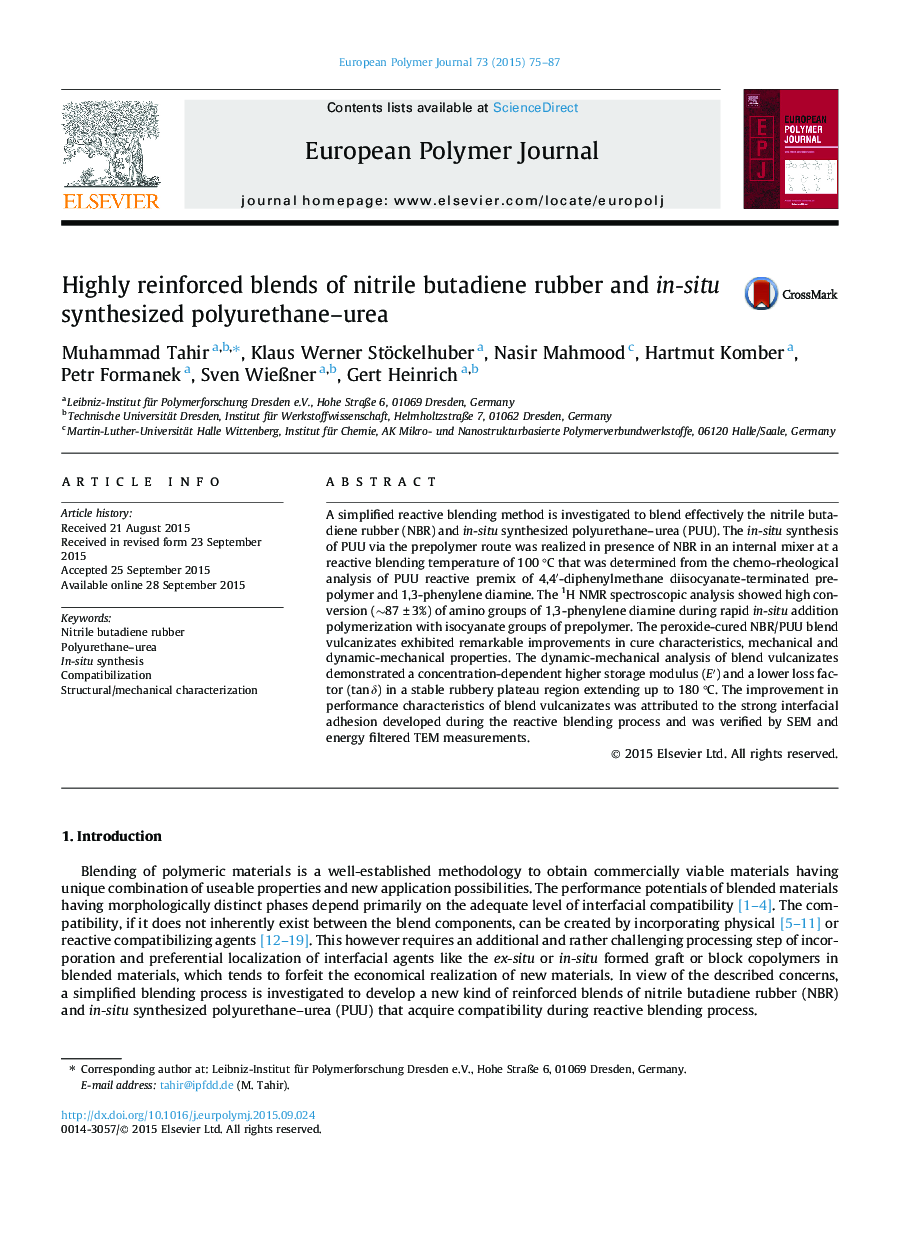| Article ID | Journal | Published Year | Pages | File Type |
|---|---|---|---|---|
| 1400366 | European Polymer Journal | 2015 | 13 Pages |
•In-situ polyurethane–urea and nitrile rubber are reactive-blended for compatibilized blends.•Evidence of 30 nm thin interphase layer in heterophase blends system.•Blends are developed at 100 °C and perform remarkably till high temperature of 180 °C.•Blends having unprecedented static and dynamic characteristics are achieved.
A simplified reactive blending method is investigated to blend effectively the nitrile butadiene rubber (NBR) and in-situ synthesized polyurethane–urea (PUU). The in-situ synthesis of PUU via the prepolymer route was realized in presence of NBR in an internal mixer at a reactive blending temperature of 100 °C that was determined from the chemo-rheological analysis of PUU reactive premix of 4,4′-diphenylmethane diisocyanate-terminated prepolymer and 1,3-phenylene diamine. The 1H NMR spectroscopic analysis showed high conversion (∼87 ± 3%) of amino groups of 1,3-phenylene diamine during rapid in-situ addition polymerization with isocyanate groups of prepolymer. The peroxide-cured NBR/PUU blend vulcanizates exhibited remarkable improvements in cure characteristics, mechanical and dynamic-mechanical properties. The dynamic-mechanical analysis of blend vulcanizates demonstrated a concentration-dependent higher storage modulus (E′) and a lower loss factor (tan δ) in a stable rubbery plateau region extending up to 180 °C. The improvement in performance characteristics of blend vulcanizates was attributed to the strong interfacial adhesion developed during the reactive blending process and was verified by SEM and energy filtered TEM measurements.
Graphical abstractFigure optionsDownload full-size imageDownload as PowerPoint slide
